
views
Cleaning and Inspecting the Guitar
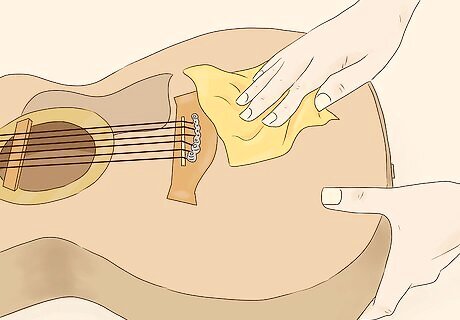
Wipe down the guitar's surface. Carefully wipe the finish of the guitar with a soft, damp cloth. You can use a special microfiber guitar cloth, available wherever guitars are sold, but an old cotton T-shirt works just fine. Simply wiping down a guitar may not get all the surface dirt. Try to figure out whether you're dealing with something oil-based or water-based, as that could determine how you can best get it off. Use water-based cleansers for water-soluble dirt and grime. A few drops of dish detergent diluted in water may work. Dampen your cloth, and try not to get too much moisture on the guitar itself. Use cleansing oils and polishes to remove oil-based dirt. Don't scrub the guitar, as you could damage the finish. This is especially important with older guitars. If you notice the finish starting to flake off, take the guitar to a luthier (someone who builds and fixes guitars) to get it cleaned, rather than trying to do it yourself.
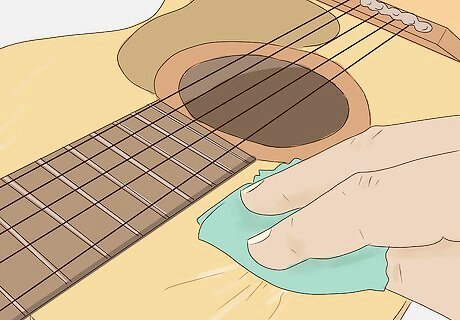
Look for scratches or cracks. Once you've cleaned the surface of the body of the guitar, examine the finish for scratches. Depending on the age of the guitar and how it was used, there also may be wear or cracks in the body. Scratches and cracks don't necessarily affect the playability of a guitar, but may affect its value. If the guitar's body is cracked, or the finish is scratched or worn down, you may want to avoid using polishes to clean the surface any further. Take the guitar to a guitar repair shop and talk to a luthier – a professional who builds, restores, and repairs guitars. They will be able to help you choose the best method to clean the guitar.
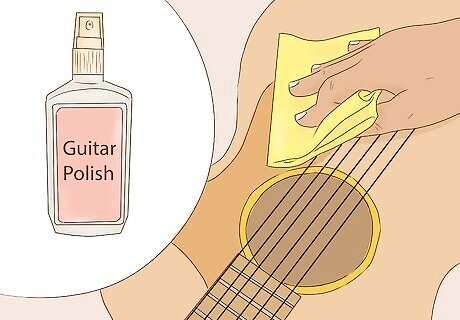
Use a polish for particularly dirty guitars. A non-abrasive cream or paste polish works well if a guitar has built-up grime of unknown origin, or if light cleaners don't seem to have any effect.These polishes also may even out small scratches in the guitar's finish. Avoid using polish if the guitar's finish has too many cracks or deep scratches. The polish may build up in the cracks and be difficult if not impossible to remove.
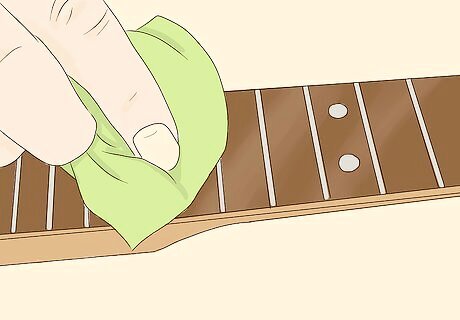
Clean the fingerboard and frets. Loosen or remove the strings (you'll probably want to replace them anyway) so you can clean the fingerboard and frets. If you use an oil or polish on the fingerboard, spray it on the cloth first – not directly on your guitar. An old toothbrush, slightly damp, is ideal for cleaning gunk from off of and around the frets. Take care not to scrub too hard – you might scratch or damage the fingerboard.

Polish the hardware. Both acoustic and electric guitars have metal parts that may be tarnished or dirty on an old guitar. Clean and polish these parts carefully, taking note of any parts that are missing or broken. Avoid replacing or repairing parts right away until you understand the value of the guitar. Generally, the guitar must be in playable condition, but before you start replacing hardware, you should have a better understanding of the age and value of the guitar.
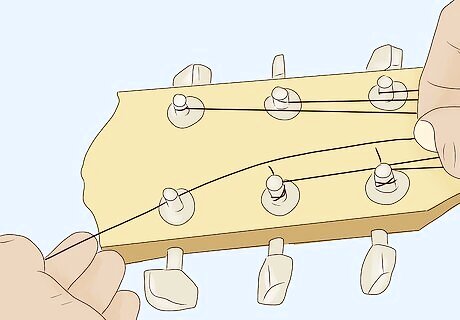
Replace the guitar's strings. A vintage guitar likely has old strings on it, if all the strings are even still there. Give it a new set of quality strings so you can properly evaluate the sound of the instrument. If you've never replaced guitar strings before, it's probably better if you take it to a guitar shop and get them to do it for you for a small fee. A friend who plays guitar may be willing to help you out for free.
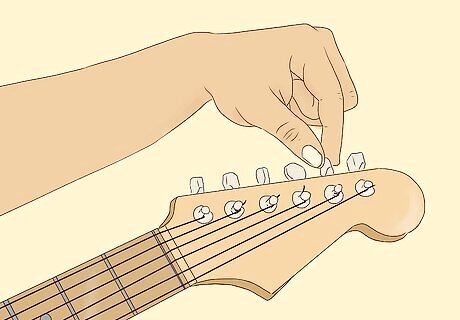
Tune the guitar. Once you've replaced the guitar strings, tune them so the guitar can be played properly. Stretch the strings by pulling the string from the end of the neck, then tune it. New strings may have a hard time staying in tune at first. You can remedy this by stretching the strings several times. After tuning the guitar, stretch the strings again. You will then have to retune it. If you repeat this four to six times, you shouldn't have a problem with the guitar staying in tune.
Dating the Guitar
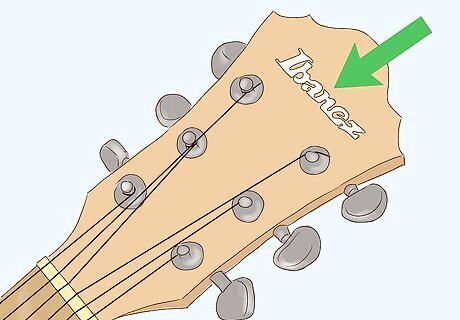
Find the name of the maker on the headstock. The name of the guitar company that made the guitar should be painted or imprinted on the headstock. It may be hard to make out if the guitar's finish is faded, or if the headstock is damaged. If you only have part of a name, you may want to compare the headstock to pictures of others to see if you can figure out the complete name. The maker's name also may appear elsewhere on the instrument, such as inside the sound hole or on the back of the instrument. Once you know the name of the maker, you can check that guitar company's website to find out how long they've been making guitars. This can give you a very vague idea of how old the guitar is. You may be able to compare the guitar you have to images online of guitars made in certain years by the same maker. This can give you a narrower range of years.
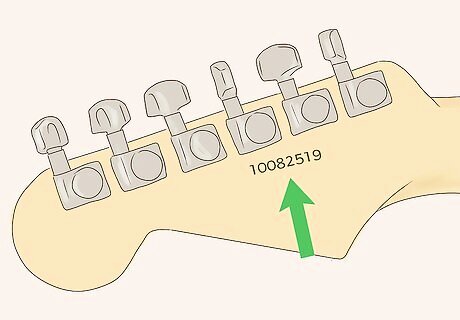
Look for a serial number. Depending on the maker of the guitar, your guitar's individual serial number may give you a better idea how old the guitar is. On an electric guitar, you'll typically find the serial number on the back of the guitar body or headstock. The serial number of an acoustic guitar may be on the back or on the label in the sound hole. The guitar's serial number also may give you a clue to its value. Generally speaking, a lower serial number (for example, "0001") indicates an older guitar that will be worth more than one with a higher serial number (for example, "0987"). The lowest serial number, indicating the first guitar of that model produced, typically commands the highest price.

Check serial numbers online. Most major guitar manufacturers, including Fender, Gibson, and Martin, have tables on their websites that list the serial numbers used for different models and the years they represent. For some manufacturers, serial numbers overlapped in some decades, or were used for more than one type of guitar. If this is the case for your guitar, you'll have to do a little more work to find out exactly how old it is.
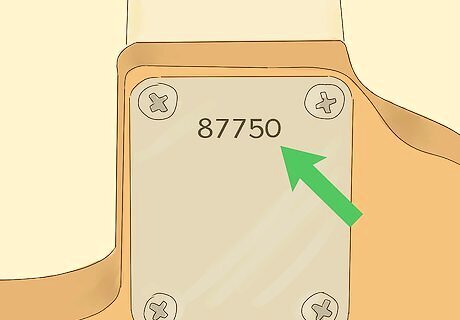
Look for a date marker on the neck. If you're comfortable taking off the neck of your guitar, you may find a date marker on the inside. However, this can be risky if you're not experienced with taking apart and rebuilding guitars. There should be a date on the neck and a date on the body. If those two dates match up, that's probably the exact date your guitar was built. If they don't, it could indicate that the guitar's neck was replaced at some point, or that the guitar was built from spare parts and is not an original build.
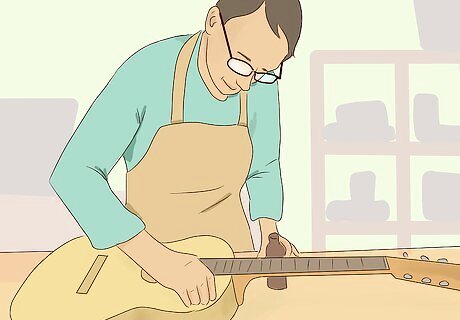
Take your guitar to a luthier or dealer. If you're not able to determine the exact age of your guitar on your own, a luthier or dealer may be able to help you. They have more familiarity with the characteristics of various vintage guitars. Going to an exclusive dealer of guitars of the same make as the one you're trying to date may be your best bet. Staff there will have intimate knowledge of that particular guitar brand, and may recognize details others would not. Depending on what you're told, you may want to take it to more than one expert – particularly if the first person who looks at it is unsure about their answer.
Valuing the Guitar
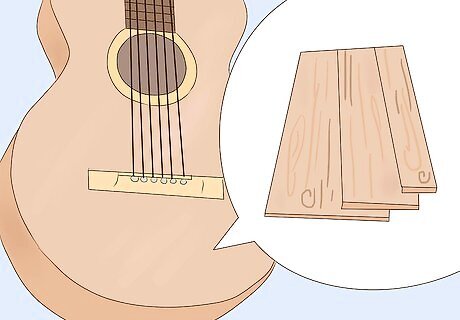
Identify rare woods and other materials. There are certain woods, such as Brazilian rosewood, that are no longer used to craft guitars because they are endangered or exceedingly rare. If your guitar is made of such a wood, or contains other rare materials, it is not only fairly old but may be extremely valuable. For example, if the guitar is heavy and the wood has a reddish hue and a tight grain, you may be looking at a Brazilian rosewood guitar, which could have a strong value. Older guitars included trim and detail in ivory or tortoiseshell, neither of which are used in present-day guitar manufacturing. Ebony also is a rare material to be on the lookout for. Most guitars are made out of common woods such as maple or poplar. If you suspect your guitar is made of a rare wood or contains rare materials, take it to an expert who can properly identify the material as authentic.

Determine if it's all original. If an old guitar has been played frequently by a musician (or several), there are doubtless various parts that have been replaced over the years. A guitar that has all its original parts will have greater value, especially if it's older. However, if an old guitar is considered "player quality," it can still fetch a good amount of money – it just won't be worth as much as it would have been if everything was original. With some older guitars, finding one that's all original is so rare that even one that's been tinkered with somewhat over the years can still have a lot of value.

Play the guitar. While some guitars may look like works of art, a guitar is first and foremost a musical interest. A lot of a guitar's value depends on how it sounds when played. Even the oldest guitar should have a crisp, clean sound. If you aren't a guitarist, take the guitar to a place where guitarists frequent, such as an open mic night at a local café. Most guitarists are more than happy to check out a vintage guitar, especially one that you think might be worth some money. The better the guitar sounds, typically, the more it will be worth. There are some adjustments you can make, such as changing the strings, that will improve the guitar's sound without detracting from its value.
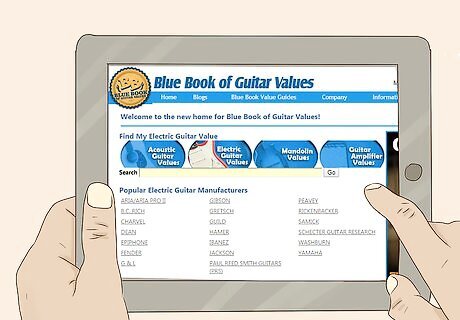
Check the Blue Book of Guitar Values. The Blue Book is one of several respected pricing guides that can help you determine the general value of your guitar, depending on its overall condition and playability. You can find the Blue Book online and search it for free at bluebookofguitarvalues.com. Any value you find in the Blue Book or any of the other guides is merely a suggestion. Various characteristics of any individual guitar could cause its value to increase or decrease. For example, you may have a 50-year-old guitar in pristine condition that is still only worth a few thousand dollars. But the same guitar in worn condition could be worth millions if previously owned by a famous rock star.

Search online. Various collectible and auction sites may have guitars similar to yours available. Compare your guitar to the ones for sale to get a better idea of the value of your guitar. Look primarily at age and condition. Some guitars get their value from another reason, such as having been owned or played by a famous musician. Avoid using these to determine the value of your guitar unless your guitar happens to have a similar pedigree.
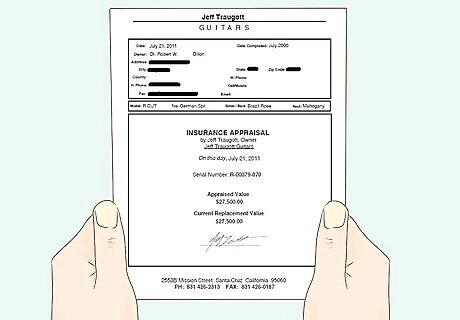
Get an appraisal from a luthier or collector. Especially if your research has led you to believe that your guitar may be worth a significant amount of money, a professional appraisal is essential. Depending on the age of the guitar, its condition, and its rarity, you may want to get two or three appraisals. Some guitar makers also may offer a service where you can have a guitar certified as authentic. An appraisal is never a guarantee of how much you would actually get for your guitar if you decided to sell it. If you want to sell a vintage guitar, get several appraisals and talk to an experienced collector or dealer who can help you showcase the guitar for the best possible result.




















Comments
0 comment